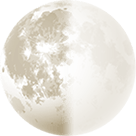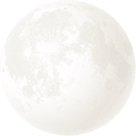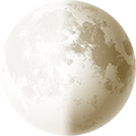February Night Sky Astronomy (2023)What to see in February Night Sky including Moon phases, planets, conjunctions and spring time Deep Space Objects The Beehive Cluster and Leo Triplet.
February Moon Phases
February's Full Moon is named for the snowy weather in the Northern hemisphere and the full moon is called the Snow Moon. Storm Moon and hunger moon are other common names.
Full Moon and New Moon for February 2023

February 2023 Full MoonMon 6th Feb

February 2023 Last QuarterTue 14th Feb

February 2023 New MoonMon 20th Feb

February 2023 First QuarterMon 27th Feb
Lunar libration favours Mare Orientale on 13-17 February so this night to catch a glimpse of this rare lunar sight. Look to the western limb of the moon, at roughly 8 o'clock position.
February Planets
Mercury will be visible in the evening sky from mid-February to early March, and dim in the morning from late March to early May. Best seen just before mid-month. You'll be able to use the thin crescent moon to help locate Mercury around 30 minutes before sunrise. The moon will be very low on the horizon and Mercury will be around 7 degrees to the left.
Venus is always brilliant, shining with a steady, silvery light. Mornings in the eastern sky at dawn from early January through to mid-June.
Mars is visible in the night sky from January to mid-July, then shifts to the morning sky from mid-Oct to the end of December.
Get up early on the mornings between the 27th and 1st of April to see Venus, Mars and Saturn together in the same binocular field of view, with the crescent moon below them.
Jupiter will be visible in the mornings from January to May, evenings from May to November, and mornings again from mid-December to the end of December. On February 22nd the Moon and Jupiter will be separated by a degree and should look good through binoculars and small telescopes.
Saturn will be in conjunction with the Sun on Feb 16th, so will not be visible.
February Meteor Showers
There are no notable meteor showers in February.
February Deep Space Objects
Winter constellations start to set and make way for the spring constellations. Cancer and Leo are rising in the east and make good spring targets for DSO hunters.
February and March are good times to observe the Beehive cluster (M44) in Cancer as it will be high in the sky. It is visible with the naked eye from a dark site, and a superb star cluster to observe in a small telescope.

February and March is also prime time for the Leo triplet of galaxies. Sitting about halfway between the stars Chertan and Iota Leonis, the three galaxies are a sight to behold as they all fit within the field of view of a small telescope.
If you're just beginning to observe galaxies then Messier M81 - Bode's Galaxy, and Messier M82 - Cigar Galaxy - in the constellation of Ursa Major are a nice bright pair to track down. They are located very close to one another, about 2° east of the star 24 Ursae Majoris.










